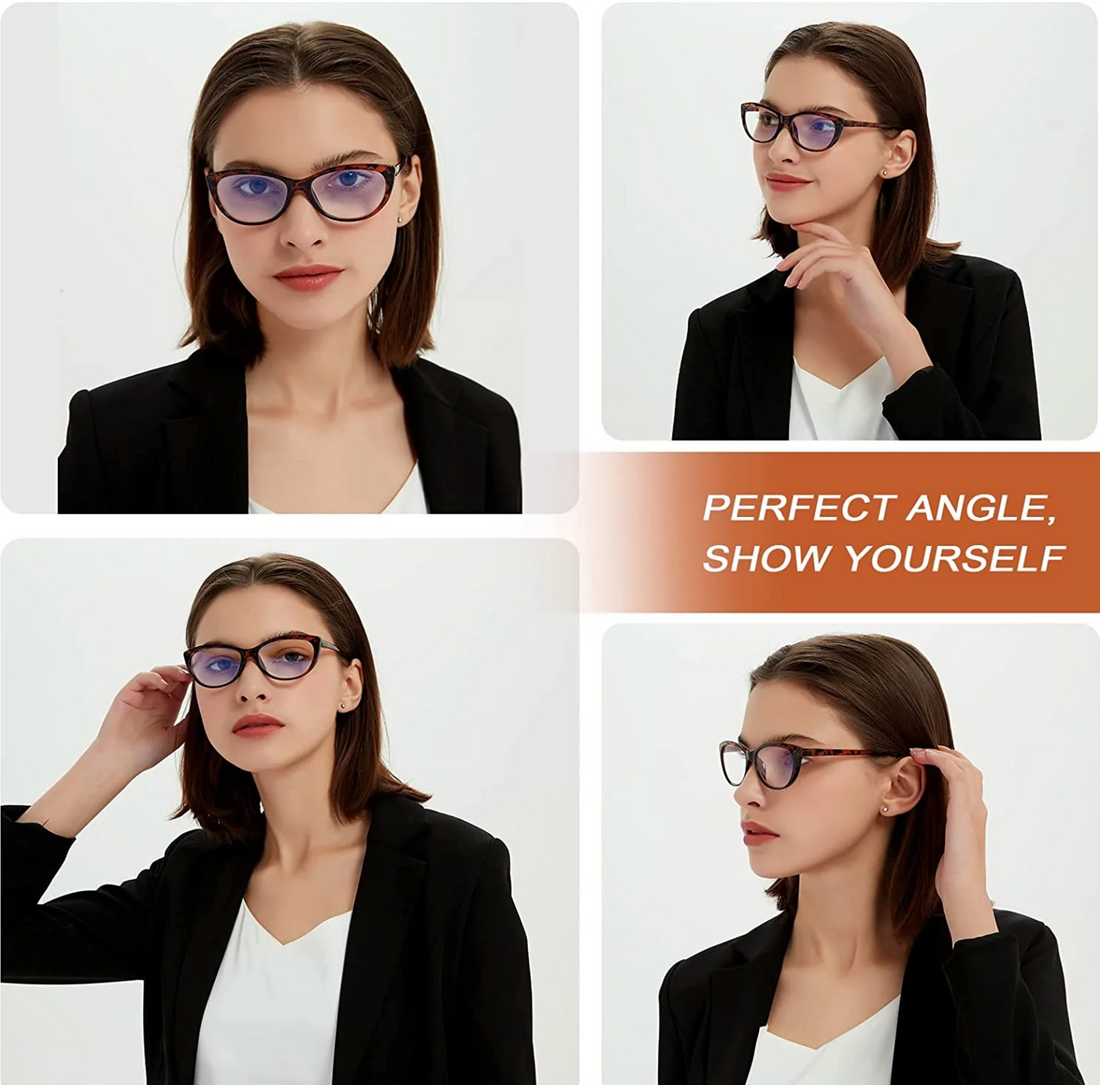
How to Choose the Right Eyeglasses: A Comprehensive Guide
Share
Choosing the right eyeglasses depends on your vision needs and personal preferences. Here are some common types of eyeglasses and their features to help you make an informed decision.
Single-Vision Eyeglasses
Single-vision eyeglasses have a single lens power, suitable for either distance or near vision. They are commonly used for:
- Myopia (Nearsightedness): Difficulty seeing distant objects clearly.
- Hyperopia (Farsightedness): Difficulty seeing close objects clearly, sometimes affecting distance vision as well.
- Presbyopia: Age-related difficulty in seeing close objects, typically starting around age 40.
For presbyopia, single-vision lenses often come as reading glasses. These can be purchased over the counter or prescribed by an eye care provider. Using reading glasses won't accelerate vision deterioration, as presbyopia cannot be reversed by exercises or medications.
Multifocal Eyeglasses
Multifocal eyeglasses correct both distance and near vision in the same lens. Common types include:
- Bifocals: Lenses with two sections, the lower part for reading and the upper part for distance vision.
- Trifocals: Lenses with three sections, for distance, intermediate, and near vision.
- Progressives: Lenses with a smooth transition between different vision zones, without visible lines, providing a more aesthetically pleasing look. However, they may cause more distortion and have smaller focal areas.
Computer Glasses
Computer glasses feature multifocal lenses designed specifically for focusing on computer screens, reducing eye strain. They are ideal for office workers who frequently switch focus between screens, documents, and whiteboards.
Lens Materials
Modern eyeglass lenses are primarily made of plastic, which is lighter and safer than glass. Common materials include:
- Polycarbonate: Highly impact-resistant, ideal for sports or high-risk activities.
- Trivex: Similar to polycarbonate but with less distortion.
- High-Index Lenses: Thinner and lighter, suitable for high prescriptions, reducing the "coke bottle" effect of thick lenses.
Protective Coatings
- Anti-Reflective Coating: Reduces glare, improves clarity, and enhances appearance, especially useful for night driving.
- UV Coating: Protects eyes from harmful UV rays.
- Photochromatic Lenses: Automatically adjust tint based on light exposure, darkening in sunlight and lightening indoors. However, they may not work well in cars or airplanes due to window light blockage.
Price Considerations
Price is not the sole indicator of quality. Consider the following factors when choosing eyeglasses:
- Lens and Coating Quality: High-quality materials and coatings offer additional comfort and protection.
- Frame Material: Metal frames are usually more expensive than plastic but are more durable and stylish.
- Brand and Design: Designer brands and fashionable designs often cost more but do not necessarily offer better quality.
- Prescription Complexity: High prescriptions or specialized lens designs increase the cost.
- Fit and Comfort: Ensuring the glasses fit well and are comfortable is crucial, more so than just focusing on price.
Conclusion
Selecting the right eyeglasses involves considering your vision needs, lens types, materials, protective coatings, and budget. Single-vision lenses are suitable for specific vision issues, while multifocal lenses offer convenience for those needing both distance and near vision correction. Quality lens materials and coatings enhance comfort and durability but may affect the price. Focus on your needs and comfort to find the best eyeglasses for you.
I hope this information helps you make an informed choice. If you have any further questions or need additional advice, feel free to reach out.